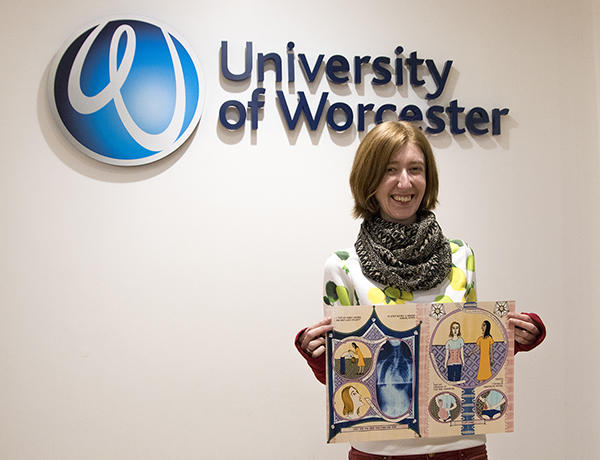A University of Worcester graduate has won an international illustration competition, using her own experiences of a spinal condition to counter Shakespeare's depiction of Richard III.

Kathryn Martin contrasted her treatment for scoliosis in her teens, the same condition suffered by the medieval king, to Shakespeare's description of him in the eponymous play, for her graphic novel.
Her efforts earned her the top spot in the over 25s section of the Graphic Shakespeare Competition, which attracts entries from all over the world.
"It's very exciting especially because of how personal this project is," said the 26-year-old former Illustration student whose work will now be displayed in the Philippines.
"To think that other people are going to see this story is going to be great and I hope that they appreciate what I'm trying to get at in terms of the positive reinforcement of something which is deemed as negative in Shakespeare's play."
The eight-page illustration depicts the famous opening monologue of Richard III.
However, Kathryn's piece does not feature Richard III himself and he is shown only through emblems; the white rose, for the House of York, and his personal emblem, the white boar.
The focus is instead on Kathryn herself, who is based in Wimbledon but also spends time in Worcester during the week lecturing part-time at the University.
Kathryn was inspired by the discovery of Richard III's body in a Leicester car park in 2012. The skeleton revealed Richard had scoliosis, a condition that causes a curvature of the spine, but in Shakespeare's play he is depicted as a scheming hunchback.
Kathryn had the same condition and wore a back brace for two years before she had surgery to correct it at 14, a journey which she details alongside the words of the play.
Through this piece, which took two months from concept to final design, Kathryn aimed to show that using people's physical impairments to make aspersions on their character is misleading.
"I've wanted to do this for a while," she said. "I wanted to do a depiction of scoliosis and challenge that "deformity" in Shakespeare's words and connect it to me and the treatment I received. While it was hard to go through, it was a positive thing for me.
"It was proven Richard only had a curvature of the spine. He wasn't deformed as they depict him in the play. His deformity adding to his evilness I see as unfair to people like me who had this condition. We're not evil and I think it's an unfair thing to do.
"It's very personal which is why I'm so grateful it's been recognised. I put a lot of heart into this and it's paid off."
The work will be on display at the Asian Shakespeare Conference in the Philippines in May. The 2016 winner also went on to be displayed at venues in Japan.